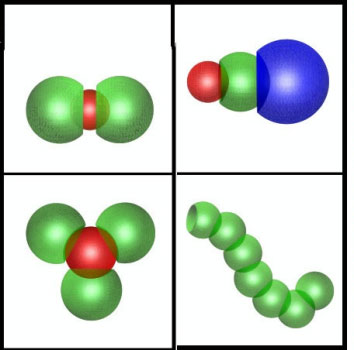| Posted: March 24, 2010 |
Researchers create 'handshaking' particles |
|
(Nanowerk News) Physicists at New York University have created "handshaking" particles that link together based on their shape rather than randomly. Their work, reported in the latest issue of the journal Nature, marks the first time scientists have succeeded in "programming" particles to join in this manner and offers a type of architecture that could enhance the creation of synthetic materials.
|
|
"We expect these interactions to offer unprecedented opportunities for engineering 'smart' composite particles, new functional materials, and microscopic machinery with mobile parts," wrote the researchers, part of NYU's Center for Soft Matter Research.
|
 |
| NYU physicists have created “handshaking” particles that link together based on their shape rather than randomly. The graphic shows how the researchers developed a “lock and key” mechanism that allows specific particles to join together.
|
|
The process is centered on creating and manipulating colloids—particles suspended within a fluid medium. Colloidal dispersions comprise such everyday items as milk, gelatin, glass, and porcelain.
|
|
Working with microscopic particles—25 placed together, end-to-end, would match the width of a strand of human hair—the researchers developed a "lock and key" mechanism that would allow specific particles to join together much in the way Pac-Man would swallow dots in the 1980s video game.
|
|
The "key" is any spherical particle. Creating the "lock," however, required a multi-step polymerization process. To do it, the researchers took a droplet of oil and placed it in water. The process resulted in a hardened outer shell, which would then buckle to form an indentation, or Pac-Man mouth, allowing it to bind to the other sphere ("the key").
|
|
The work is part of scientists' ongoing efforts to understand and control how particles self-assemble to make new materials. Complex materials cannot be constructed particle by particle; rather, they must be directed to self-assemble, which would produce these materials in an efficient manner. However, manipulating the self-assembly process has proven elusive to scientists because their understanding of how particles interact is limited.
|
|
By creating a process by which particles come together to form an aggregate, physicists at NYU's Center for Soft Matter Research have marked a next step in understanding and developing the self-assembly process.
|

